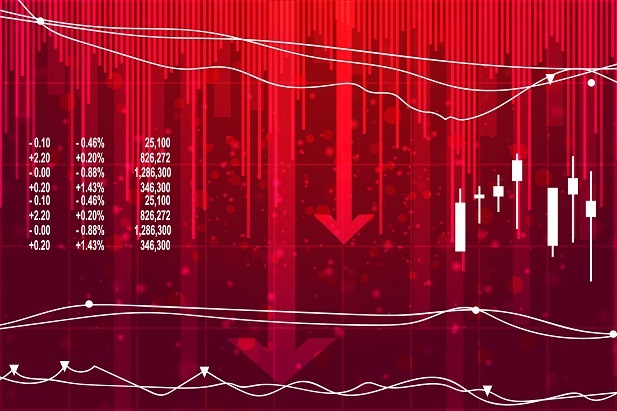Editor's note: As we cringe at the recent volatility in themarkets, this article published two years ago(in the 'good old days' of investing) gave us someperspective.
|Bad stock market calls could fill oceans. To find themyou don't have to go far beyond big market crashes.
|That said, with the increasing number of bigand “mini” flash crashes, the list getslonger. Here are eight of the worst market calls of alltime, although there are many more:
|
8. The granddaddy of bad calls
Back in 1929, Irving Fisher, a much-heeded economist, predicteddays before one of the most famous stock market crashes in historythat stocks had hit a “permanently high plateau.”
|“I do not feel there will be soon, if ever, a 50-60 point breakfrom present levels,” he said, and in fact, he thought the marketwould go higher in the next few months.
|Starting on Oct. 23, 1929, the stock market dropped roughly 68points, a 23% drop, which signaled the beginning of the GreatDepression.
|
7. Dishonorable mentions
Though we are focused on stock market blunders, other marketshave their own stumbles.
|For example, a very bad call and illiquidity in the forex marketbrought down John Meriwether's Long-Term Capital Management hedgefund in 1998 when it lost $4.6 billion.
|But the move by the Hunt brothers in 1980 to corner the silvermarket (silver went from about $6 per troy oz. to almost $50 in ayear, and then dropped 50% in one day) was bad because they didn'trealize a market could move the goal posts, which is what the Comexmetals exchange (and its board of directors) did to save the market(and themselves) from disaster.
|
6. Big Wall Street banks and mortgage-backed securities
The 2008 financial crisis has many bad actors, but the big WallStreet banks had leading roles.
|If your reading of “The Big Short” is up to date, banks fromJ.P. Morgan and Citigroup to Bank of America and Wells Fargo soldloan tranches filled with junk-rated mortgages without realizing it(or caring about it).
|That said, the banks didn't pay (really) for their obtusenessthat almost brought down the global economy, because the U.S.government saved them through the $431 billion TARP bailout.
|AIG's $180 billion government bailout was the second act of thefinancial crisis, although the firm eventually paid back thegovernment.
|
5. Don't put it in print!
Writing books about where the Dow Jones Industrial Average willbe by a specific year is dangerous.
|People may forgive a television appearance or even a newsletter,but a book lasts forever.
|Robert Zuccaro, whose 2001 book, “Dow 30,000 by 2008: Why it'sdifferent this time,” may look better today as the market edgestoward 23,000, but timing is everything in the market, and hisforecast was definitely off.
|
4. Google 'oops'
You can forgive internet shyness after the 2000 crash, but onJuly 30, 2004, investor Whitney Tilson wrote in a Motley Fool piecethat, “It is virtually certain that Google's stock will be highlydisappointing to investors foolish enough to participate in itsoverhyped offering — you can hold me to that.”
|Google's IPO took place on Aug. 19, 2004, when19,605,052 shares were offered at a price of $85 per share. Sincethen, Google's stock price has risen to $1,050.
|
3. Tech wars
Prior to Apple's iPhone release in 2007, Steve Ballmer (photoabove), then CEO of Microsoft and, granted, a competitor, predictedthere was no chance the new Apple smartphone would get “anysignificant market share. No chance.”
|Perhaps it was wishful thinking or just a bad call, but todayApple's iPhone, the most recent version of which is iPhone X, hasabout 34% of smartphone market share.
|
2. Missing Enron
Here's some Wall Street irony: Fortune magazine voted Enron“America's Most Innovative Company” from 1996 to 2001.
|Then, in late 2001, Enron stock fell to 6.2 cents (from a highof $90 in August 2000) and the firm went bust, largely becauseenterprising reporters from Fortune magazine found major balancesheet problems.
|Keep in mind, no Wall Street analysts had sell ratings at thattime – even as Enron stock was at $20 in September 2001.
|
1. The James Cramer we love to hate
Odds go up when your job is entertaining an investing publicevery day on what stocks to buy and sell that you'll make some badcalls.
|But James Cramer has made a lifetime of bad calls, especiallywhile hosting CNBC's “Mad Money.” His call on Bear Stearns will godown in history as one of his worst.
|On March 11, 2008, Cramer told a viewer who was concerned aboutBear, “No! No! No! Bear Stearns is not in trouble. If anything,they're more likely to be taken over. Don't move your money fromBear.”
|Three days later the stock fell on news of the Fed bailout from$159 a share to where the firm was “bought out” by JP Morgan for $2a share.
|Not sure what advice he gave on Lehman Brothers.
|READ MORE:
|Investing in the age of FOMO is actuallyhard
||Complete your profile to continue reading and get FREE access to BenefitsPRO, part of your ALM digital membership.
Your access to unlimited BenefitsPRO content isn’t changing.
Once you are an ALM digital member, you’ll receive:
- Critical BenefitsPRO information including cutting edge post-reform success strategies, access to educational webcasts and videos, resources from industry leaders, and informative Newsletters.
- Exclusive discounts on ALM, BenefitsPRO magazine and BenefitsPRO.com events
- Access to other award-winning ALM websites including ThinkAdvisor.com and Law.com
Already have an account? Sign In
© 2024 ALM Global, LLC, All Rights Reserved. Request academic re-use from www.copyright.com. All other uses, submit a request to [email protected]. For more information visit Asset & Logo Licensing.









